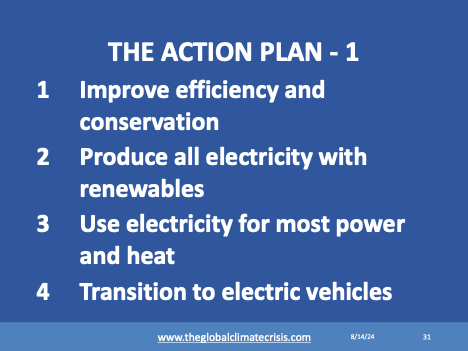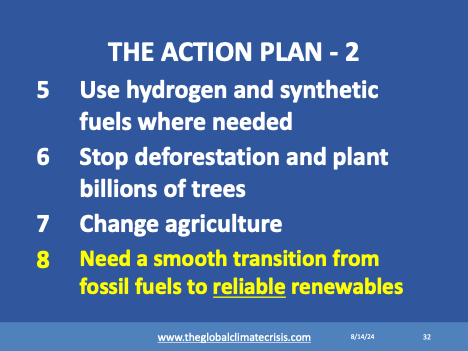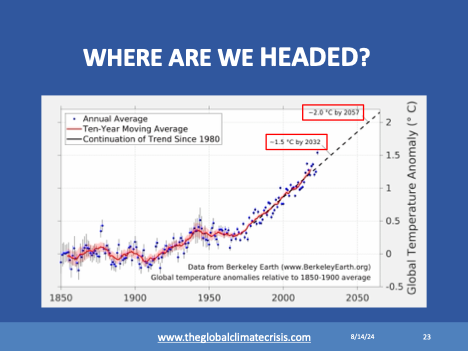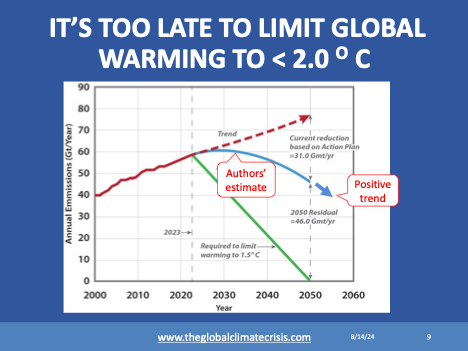Climate Action Plan
THE ACTION PLAN
We cannot continue to discharge into the atmosphere 54 billion metric tons per year or more of greenhouse gases indefinitely.
To stop global warming and climate change, we have to reach NET ZERO emissions. NET ZERO is when no additional human-caused greenhouse gases are added to the atmosphere. Emissions that can’t be eliminated have to be offset by natural means or technology. Carbon removal is not practical or the scale needed to make a difference.
Nearly 75% of greenhouse gas emissions are due to using fossil fuels to produce power and heat for industrial, commercial, and residential uses. About 25% of greenhouse gases come from agriculture and deforestation.
It is important that we do what needs to be done when it comes to climate action — not just do something.
What needs to be done?
The following is not what we want to do but what we must do to minimize fossil fuel use and other measures needed to eliminate human-caused greenhouse gas emissions:
- Improve global energy efficiency and conservation from about 2% a year to 3% year. This would reduce energy consumption by about 25% by 2050 compared to present trends.
- Produce all electricity with renewables, mainly solar and wind. According to the International Energy Agency latest report, global energy investment is estimated to be $2.8 trillion in 2023. About 60% of this amount is expected to be for clean energy technologies.
- Electrify the economy by using electricity instead of fossil fuels for power and heat wherever possible. This will require that electricity production be doubled or tripled, and all this electricity has to be produced using renewables.
- Transition to electric vehicles. Global electric vehicle sales are expected to surge for the third year in a row and all major automobile manufacturers are introducing electric vehicles. It is to be determined if most customers are ready to switch to electric vehicles and if the electric grid can handle the additional loads.
- Stop subsidizing fossil fuels. This slows the transition to renewables. Subsidies should be temporary such as to kick-start a new industry. Unfortunately, many subsidies morph into long-term entitlements.
- Consider a carbon tax or at least a border adjustment tax that penalizes those countries that are not reducing greenhouse gas emissions.
- Use hydrogen and synthetic fuels where needed, for example, for aviation or ocean shipping.
- Stop deforestation and plant billions of trees to absorb more CO2 naturally from the atmosphere. Tree planting on this massive scale should be possible if it’s a policy priority and available land is made accessible.
- Farming methods need to be changed to sequester more CO2 and to use less nitrogen fertilizer. We need to improve cattle raising for meat and dairy products. Cattle raising is a large source of greenhouse gases.
- Finally, take additional actions to offset any emissions that can’t be eliminated such as through carbon capture or other means.




